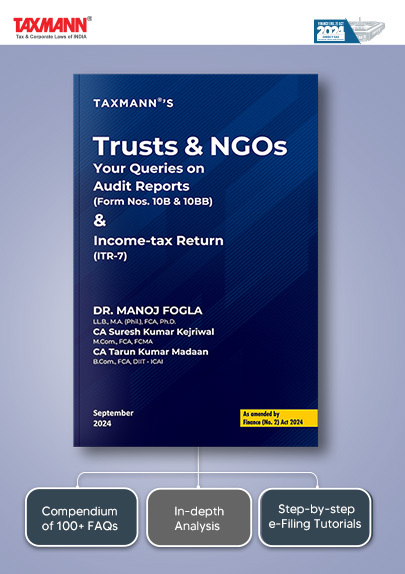Legal Heirs Can Raise Contention That Notice Was Issued in Name of Deceased Person | SC
- Blog|News|Income Tax|
- 2 Min Read
- By Taxmann
- |
- Last Updated on 19 December, 2024
Case Details: Ghanyashyam Anil Dhanani vs. Income-tax Officer Ward 17(1)(1) - [2024] 169 taxmann.com 327 (SC)[28-11-2024]
Judiciary and Counsel Details
- Mrs. B.V. Nagarathna & Nongmeikapam Kotiswar Singh, JJ.
-
Prateek K. Chadha, AOR, Mihir Naniwadekar, Sreekar Aechuri, Aniket Chauhaan & Arjun Nayyar, Advs. for the Petitioner.
-
Raghavendra P. Shankar, A.S.G., Raj Bahadur Yadav, AOR, Udai Khanna, Sanjay Kumar Yadav, Karan Lahiri & Navanjay Mahapatra, Advs. for the Respondent.
Facts of the Case
A notice under section 148A(b) was issued in the name of the original assessee who had died prior thereto. In response to the said notice, a reply was given by the son of the original assessee stating that his father, the assessee, had passed away.
Thereafter, another communication was issued seeking details of the original assessee’s legal representatives. The Chartered Accountant of the legal representative responded to the same. On becoming aware of the legal representatives of the deceased original assessee, an order was passed under section 148A(d).
Subsequently, another order was passed under section 148A(d) in the name of the legal representatives of the deceased-original assessee. Aggrieved by the said order, the legal representatives of the deceased-original assessee filed a Writ Petition contending that the original assessee had died and accordingly, the proceedings for reassessment were vitiated as they were commenced against a dead person.
High Court Held
The High Court disposed of the Writ Petition by holding that the legal representatives could take all contentions available to them except the fact that the initial notice was issued in the name of a dead person.
Accordingly, the matter reached before the Supreme Court. The legal heir contended that the main impediment in the case was that the High Court curtailed the right of legal heirs to take a contention that the impugned Notices were initially issued in the name of a dead person. Solely because the appellant, as a legal representative, subsequently responded to the notices would not imply that the proceeding initiated was valid. It was sought to be contented that the proceedings in fact were vitiated on account of the initial Notices being issued in the name of a dead person and the subsequent participation of the legal representatives in the proceedings before the Assessing Officer would not have cured the initial defect.
The Apex Court held that it was found that the said request made to the Court was reasonable and in accordance with law and therefore, ‘paragraph 4’ of the impugned order contending that all rights and contentions other than the notice issued to a dead person, is kept open, was set aside and the appellant was permitted therein to take the contention with regard to the initial Notice being issued in the name of a dead person-original assessee being defective and also take all other contentions available to the appellant before the Assessing Officer. Consequently, the impugned orderwas set aside to that extent.
Thus, the appeal was allowed and disposed of in the aforesaid terms.
List of Cases Reviewed
- Ghanshyam Anil Dhanani v. Income Tax Officer [2024] 169 taxmann.com 326 (Bom.) [Para 10] Partly set aside
Disclaimer: The content/information published on the website is only for general information of the user and shall not be construed as legal advice. While the Taxmann has exercised reasonable efforts to ensure the veracity of information/content published, Taxmann shall be under no liability in any manner whatsoever for incorrect information, if any.

Taxmann Publications has a dedicated in-house Research & Editorial Team. This team consists of a team of Chartered Accountants, Company Secretaries, and Lawyers. This team works under the guidance and supervision of editor-in-chief Mr Rakesh Bhargava.
The Research and Editorial Team is responsible for developing reliable and accurate content for the readers. The team follows the six-sigma approach to achieve the benchmark of zero error in its publications and research platforms. The team ensures that the following publication guidelines are thoroughly followed while developing the content:
- The statutory material is obtained only from the authorized and reliable sources
- All the latest developments in the judicial and legislative fields are covered
- Prepare the analytical write-ups on current, controversial, and important issues to help the readers to understand the concept and its implications
- Every content published by Taxmann is complete, accurate and lucid
- All evidence-based statements are supported with proper reference to Section, Circular No., Notification No. or citations
- The golden rules of grammar, style and consistency are thoroughly followed
- Font and size that’s easy to read and remain consistent across all imprint and digital publications are applied






 CA | CS | CMA
CA | CS | CMA


